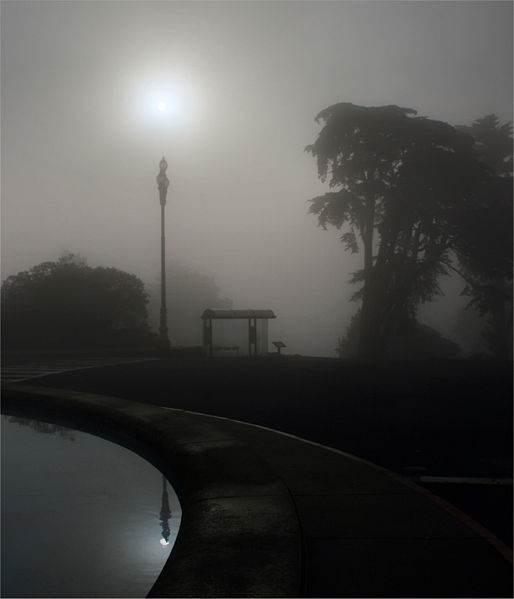Although Japan quake seems a world away, U of M researchers stress prudence of preparedness
By Cole Epley
Although recent news has been inundated with images and reports of ongoing earthquake devastation in Japan, the Center for Earthquake Research and Information at the University of Memphis stays busy studying the potential effects of earthquakes in the central and eastern United States. The New Madrid Seismic Zone, located in northeastern Tennessee, northeastern Arkansas, southeastern Missouri and southwestern Kentucky, has overwhelming potential to adversely affect seven states and major cities with devastating force. Center for Earthquake Research and Information doctoral candidate Gary Patterson answers some key questions concerning the work performed at the center and discusses the unique threats facing the Central and mid-Southern United States.
*****
First, what is the mission of the Center for Earthquake Research and Information?
The mission of the Center for Earthquake Research and Information is to study the causes and consequences of earthquakes. Mainly, that entails monitoring earthquakes in the southern United States, which the Department of the Interior and the United States Geological Survey fund us to do. So, if you get information on earthquakes in the eastern United States, a lot of it comes from the Center for Earthquake Research and Information. Outside of that monitoring role, our researchers come from all over the world and they have projects all over the world, so you’ll find us in all corners of the globe doing different things to understand the puzzles of how the earth works as a system.
Are there any other major seismic study centers in the region?
There are a lot of earthquake research centers, actually: St. Louis University has one, University of Arkansas-Little Rock, Ole Miss, also. In terms of numbers, the Center for Earthquake Research and Information is large, with 50 to 55 people both working on the seismic monitoring issues as staff members and our research scientists like Dr. Steve Horton looking at specific regional and global issues, we’re well distributed across the region.
So, how real is the threat to Memphis posed by its proximity to the New Madrid Seismic Zone?
First of all, we don’t know everything about how the New Madrid Seismic Zone works. There are a lot of good research theories based on very good data that reasonable people can come to different conclusions on. What we know is that three very large earthquake sequences have occurred here in the last 1,500 years. In terms of building codes, we look at those sequences as one event, so that’s three earthquakes in 1,500 years, which is a 1 in 500 annual probability. That’s within the life of a building, and about a 10 percent chance that you could have a big earthquake within the life of that building.
What makes the New Madrid Seismic Zone unique?
Along the New Madrid Seismic Zone, earthquakes don’t happen as often; they seem to occur in sequences; there’s a lot of social vulnerability in the region—the Katrina experience shows us that if you have that kind of vulnerability, such as a lot of poor people living in poorly built structures, it’s important to know that it is prudent to prepare. If you take the same magnitude event in southern California and put it here in the region, the one here would be felt over a ridiculously large area in comparison. So, the deep, underlying geology in the central U.S. is generally composed of hard, cold rocks that allow earthquake energy to spread out with little impedance. As opposed to southern California, where the deep rocks about 10-20 miles deep are relatively hot and shattered, so energy dissipates quickly… Probability of occurrence is low in the central United States [when compared with the thousands of annual earthquakes in California] but the consequences are high, because here, they’re a different kind of quake.
What is known about the last major earthquake within the New Madrid Seismic Zone?
In 1895, a mid-magnitude six earthquake occurred on Halloween night in Charleston, Missouri. It was about the same size as the North Ridge earthquake of 1994 in southern California, where dozens of lives were lost and $40 billion in insured losses were recorded. Those kinds of quakes in the central U.S. are much more likely to occur than ‘the big one.’ Having said that, these ‘big ones’ are also very important because they affect such large areas. Compared to California, the planning is different when we look at large earthquakes because there would be many major cities that could be in competition for resources. That’s why it’s important to plan for these events now.
About how many earthquakes occur within the region during a year?
There are several seismic sources within the eastern United States. The largest in priority is the New Madrid Seismic Zone, the East Tennessee Seismic Zone, the Waubash Seismic Zone in southern Illinois and eastern Indiana, and the South Carolina Seismic Zone. We’ve also got a new one in the Central Arkansas Seismic Zone. We record 200 earthquakes a year in the NMSZ, about 80 per year in the ETSZ. Those are the two most active zones in our area, but since October of 2010, the Central Arkansas Seismic Zone has been the most active zone in the eastern U.S.
*****
Patterson’s emphasis on the prudence of preparation is not without an ominous tone. Rumors abound about the mighty Mississippi River literally flowing backwards because of the seismic stresses to the terrain to the north of Memphis. A 2008 FEMA report warned that a major earthquake in the New Madrid Seismic Zone would have “catastrophic” consequences, resulting in “the highest economic losses due to a natural disaster in the United States.” Indeed, the question seems to be not “if,” but “when.”
